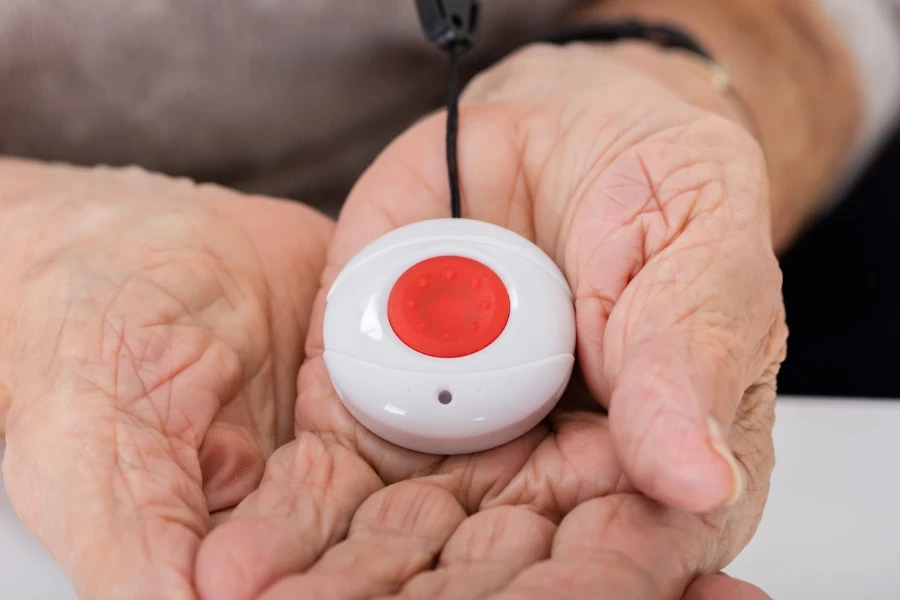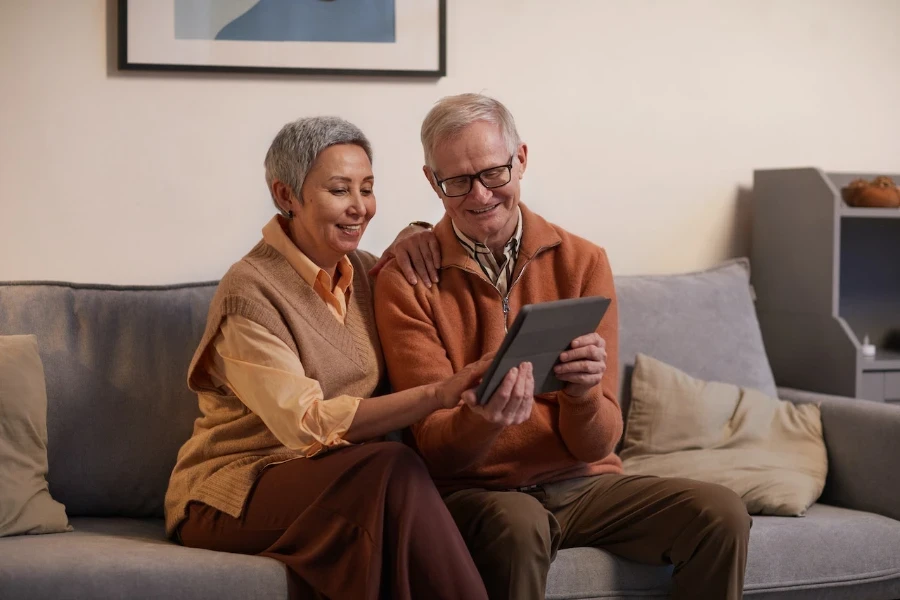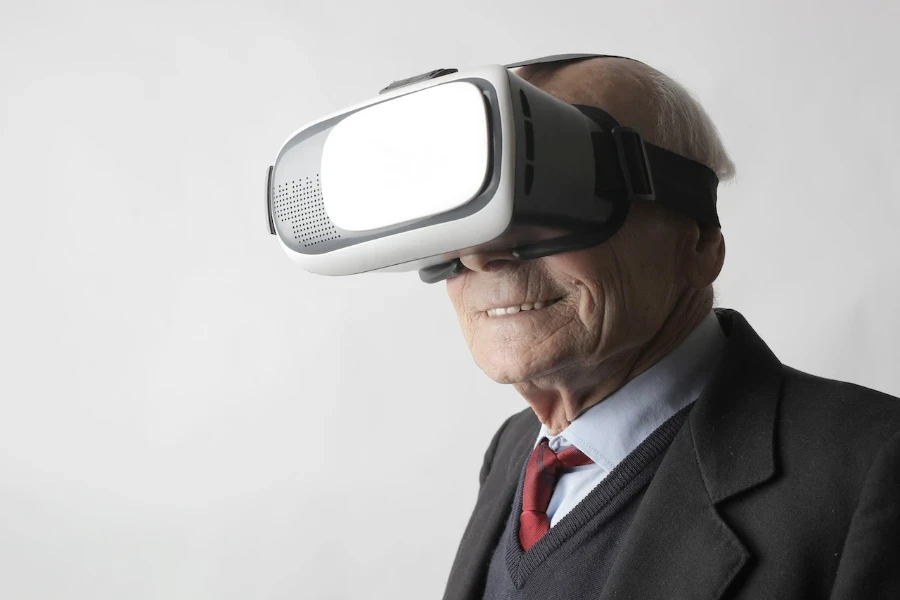As technology advances at an unprecedented pace, its potential to enhance lives becomes increasingly evident. In this comprehensive guide, we delve into home automation, uncovering how it can revolutionize the living experience for seniors and individuals with disabilities. From intuitive voice-controlled devices to smart lighting systems that illuminate pathways, we’ll navigate a spectrum of innovative solutions designed to foster independence, safety, and an elevated quality of life.
Join us as we embark on a journey to unveil the power of technology in creating accessible, inclusive, and empowering living spaces.
Table of Contents
The benefits of home automation for seniors and people with disabilities
Key home automation solutions for accessibility
The importance of tailoring home automation to specific needs
Integrating medical and healthcare devices
Overcoming technological barriers
Marketing home automation to seniors and people with disabilities
Future trends and innovations in home automation
Conclusion
The benefits of home automation for seniors and people with disabilities
Seniors and people with disabilities often face challenges impacting their daily lives and independence. Home automation can offer solutions to address these challenges and enhance their overall quality of life. Some of the benefits of home automation include:
Mobility limitations
Seniors and individuals with mobility issues may struggle to move around, access objects, or perform basic tasks. Home automation can assist by controlling lights, appliances, and locks through voice commands or smartphone apps, eliminating the need for physical movement.
Safety concerns
Falls and accidents are a significant concern for seniors and people with disabilities. Smart sensors can detect movement patterns, monitor unusual activity, and send alerts to caregivers or emergency services in case of a fall or other emergencies.
Cognitive impairments
Memory loss or cognitive decline can make remembering daily tasks or medication schedules challenging. Home automation can provide reminders for appointments, medication, and tasks, making it easier for individuals to stay organized. Smart medication dispensers can also provide reminders and accurately dispense the required medications at the correct times, helping individuals manage their health better.
Visual and auditory impairments
Seniors with visual or auditory impairments might struggle with traditional interfaces. Voice-controlled devices and smart speakers offer accessible ways to interact with technology, providing information audibly and responding to vocal commands.
Temperature regulation
Certain medical conditions can make it difficult for individuals to regulate their body temperature. Smart thermostats can adjust the temperature based on preferences and can be controlled remotely, ensuring comfort and safety.
Home security
People with disabilities may be at a higher risk of burglary or intrusion due to vulnerabilities. Automated security systems can provide remote monitoring, real-time alerts, and even the ability to lock or unlock doors without physically approaching them.
Energy efficiency
People living on fixed incomes might be concerned about high utility bills. Smart energy management systems can optimize energy usage by automatically adjusting lights, thermostats, and appliances, resulting in cost savings.
Difficulty with routine tasks
Everyday tasks like cooking, cleaning, and laundry can become challenging. Robotic vacuum cleaners with automation features can assist with one of these tasks. Also, smart plugs can help people with other everyday tasks, such as turning on and off lights or fans.
By addressing these challenges through home automation, businesses can create devices and systems that empower seniors and people with disabilities to lead more independent, comfortable, and connected lives.
Key home automation solutions for accessibility
Let’s look at the specific devices that can provide home automation solutions that can improve the daily lives of seniors and people with disabilities.
- Smart lighting systems: Automated lighting with customizable brightness and color options enhances visibility, while motion sensors and smart switches ensure well-lit pathways, reducing fall risks.
- Smart thermostats: These devices regulate temperatures remotely, ensure comfort for individuals with temperature-sensitive conditions and optimize energy use.
- Automated door locks: Keyless entry systems with remote controls enable easy access for individuals with mobility issues and offer added security through personalized codes.
- Security cameras and sensors: Motion detectors and cameras with real-time alerts enhance safety, notifying caregivers of any unusual activity or potential emergencies. Also, camera doorbells can help with security and allow entrance for authorized people.
- Smart home hubs: Centralized control hubs simplify device management through unified interfaces, reducing complexity for users with cognitive challenges.
- Health monitoring devices: Integration with wearable health devices, like watches and pendants, provide real-time health data, allowing seniors and individuals with disabilities to manage their well-being effectively.
- Customizable automation routines: Tailored automation routines that adjust to individual preferences and needs, simplifying daily tasks and routines.
- Communication devices: Video calling systems and intercoms enable easy communication with family, friends, and caregivers, making communication easier and combating isolation.
- Environmental controls: Integration with curtains, blinds, and windows allows for easy adjustments to natural lighting and ventilation.
The importance of tailoring home automation to specific needs
Tailored home automation solutions are critical for seniors and people with disabilities due to their unique and diverse needs. While technology can potentially transform lives, a one-size-fits-all approach falls short in addressing the intricacies of individual challenges.
Tailored solutions offer a personalized approach that caters to specific abilities, ensuring that home automation becomes a facilitator, not a hindrance. By designing intuitive interfaces, customizing solutions for mobility, visual, auditory, and cognitive challenges, and showcasing personalized experiences, we can bridge the accessibility gap.

Integrating medical and healthcare devices
Integrating home automation with healthcare devices creates a seamless and comprehensive support system for seniors and people with disabilities. By merging technology and health, numerous benefits arise:
- Health monitoring: Smart devices can collect health data, such as heart rate, blood pressure, and activity levels. Integration with health apps allows individuals and caregivers to monitor vital metrics regularly.
- Medication management: Syncing medication schedules with home automation systems provides reminders for medication doses. Dispensers can be programmed to release pills at specific times, ensuring adherence.
- Emergency response: When health devices detect anomalies or irregularities, automated alerts can be sent to caregivers or healthcare professionals. This rapid response can prevent medical complications.
- Care coordination: Home automation can share health data with authorized caregivers and healthcare providers, facilitating collaborative care efforts.
- Peace of mind: Integrating healthcare devices with home automation assures users and caregivers that health is monitored effectively.
- Independence: Individuals can maintain a higher degree of autonomy as their health can be monitored without constant supervision, allowing them to live comfortably at home.
By merging home automation and healthcare devices, businesses can create holistic solutions that address physical well-being and enhance the overall quality of life for seniors and people with disabilities.
Overcoming technological barriers
Overcoming technology barriers in integrating home automation with healthcare devices is essential to ensure accessibility and usability for seniors and individuals with disabilities. Here’s how to address these challenges:
- Simplified user interfaces: Have user-friendly interfaces with clear icons, large buttons, and intuitive navigation to accommodate individuals with limited tech experience.
- Voice control: Voice-command capabilities for device control, allows users to interact naturally, even if they struggle with traditional interfaces.
- Remote support and training: Offer remote assistance and training to guide users through setup and troubleshooting, ensuring they feel confident using the integrated system.
- Compatibility and interoperability: Ensure healthcare devices can seamlessly communicate and integrate with various home automation platforms, preventing technical conflicts.
- Accessibility features: Incorporate accessibility features like adjustable text sizes, screen readers, and high-contrast displays for those with visual impairments.
- Personalized setup: Provide guided setup wizards that allow users to customize preferences and automation routines based on their specific needs.
- Responsive customer support: Offer responsive customer support channels to assist users in real time when they encounter technical difficulties.
By focusing on these aspects, businesses can seamlessly integrate home automation and healthcare devices that empower seniors and people with disabilities without letting technology barriers become obstacles.

Marketing home automation to seniors and people with disabilities
As you can see, home automation has numerous benefits for seniors and people with disabilities, but how do you market these devices to this population?
- Empathetic messaging: Craft messaging that emphasizes empowerment, independence, and improved quality of life. Highlight how home automation can overcome challenges and enhance daily living.
- Clear benefits: Clearly outline the advantages of home automation, such as easy control of devices, enhanced safety, convenience, and personalized experiences.
- Real-life stories: Share success stories of seniors and individuals with disabilities who have benefited from your solutions. Use testimonials and case studies to build trust and credibility.
- Simple language: Use plain and accessible language in marketing materials, avoiding jargon that could be confusing.
- Visual representation: Use images and videos that showcase seniors and individuals with disabilities using your products to demonstrate ease of use and real-world applications.
- Inclusivity: Highlight your commitment to inclusivity and accessibility in your marketing campaigns, reinforcing your brand’s values.
- Partnerships: Collaborate with senior centers, disability organizations, and healthcare providers to spread awareness and offer special promotions.
- Easy installation: Emphasize hassle-free installation and setup processes, assuring users they can handle the technology.
- Free trials or demos: Offer free trials or demos, allowing potential customers to experience the benefits of your products before committing.
- Responsive support: Promote your customer support services, reassuring customers that assistance is readily available.
- Customization: Showcase how products can be personalized to meet their unique needs, creating a sense of ownership and relevance.
- Security and privacy: Address concerns by highlighting your robust data protection measures and respecting their privacy.
By focusing on the specific needs, concerns, and aspirations of seniors and people with disabilities, your marketing efforts can effectively communicate how your home automation solutions can truly enrich their lives.

Future trends and innovations in home automation
Emerging technologies are reshaping the landscape of home automation, offering innovative solutions to enhance accessibility for seniors and individuals with disabilities:
- Artificial intelligence (AI): AI-driven systems can learn user behaviors, adapting automation routines based on preferences. Voice assistants powered by AI can provide more natural and context-aware interactions.
- Gesture control: Motion and gesture recognition technology enables hands-free control of devices, catering to individuals with limited mobility.
- Wearable integration: Integrating wearable devices, like smartwatches or health trackers, with home automation systems allows seamless health monitoring and control.
- Augmented reality (AR) and virtual reality (VR): AR and VR applications can create immersive environments that assist users in navigating their homes, especially helpful for those with visual impairments.
- Predictive analytics: Advanced analytics can predict user needs and adapt the home environment accordingly, anticipating changes in health or behavior.
- Biometric identification: Utilizing biometrics like fingerprint or facial recognition can provide secure and personalized access to home automation systems.
- Haptic feedback: Devices with haptic feedback mechanisms can provide tactile responses, aiding individuals with visual impairments in understanding device status and interactions.
These emerging technologies hold great potential to redefine home automation accessibility, offering new ways for seniors and individuals with disabilities to interact with their environments and enjoy improved independence and quality of life.

Conclusion
Home automation holds tremendous promise for seniors and people with disabilities. By tailoring solutions to their unique needs, businesses can transform lives, promoting independence, safety, and improved quality of life.
Marketing to this deserving audience isn’t just a business opportunity; it’s a chance to make a meaningful impact. When businesses embrace the responsibility of creating accessible technology, they tap into a growing market and contribute to a more inclusive society. By prioritizing empathy, education, and innovation, they can empower individuals to regain control over their environments and enhance their well-being. We encourage businesses to step forward and be pioneers in this transformative journey.




